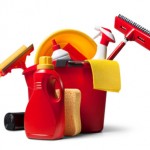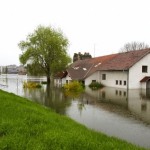When your property suffers damage from a fire, it is a stressful situation. Building materials have been destroyed, and the building’s structural integrity may be in jeopardy if the damage is severe enough. In addition, some of your content may have also been harmed due to exposure to heat, smoke, soot, and chemicals that were used to extinguish the fire.
When you return to your property, you’ll need to sort through your belongings. Some damaged content can be salvaged, but there are other belongings that, no matter how little damage they suffered, must be discarded.
Refer to the following information as you go through your content in the aftermath of a fire.
1. Exposed and/or Contaminated Food

Non-perishable food that has been exposed to the fire and its effects
Food that is stored in permeable packaging, like plastic bags, cardboard, or open containers must be thrown out. This is because they were exposed to smoke, soot, heat, and chemicals. Food that has been well-sealed may look okay, but such food could be inedible if exposed to the fire’s heat. High temperatures can cause food to spoil or have a foul taste. Additionally, even food in sealed jars and cans can become contaminated by a fire’s toxic fumes.
If you suspect any sealed food has been affected, then throw it out. It’s better to discard it than to risk your health by eating the food. As you inspect it, look for the following signs: fire extinguisher residue, rusted or bulging cans, and charred food. The sight of any of the aforementioned signs is a clear indication that the food should be thrown out.
The same goes for your pet’s food.
Perishable food that has been left at room temperature for an extended time
Assuming a refrigerator hasn’t been damaged, there are some instances in which refrigerated or frozen food can be saved. This is even the case when there’s a power outage. If a refrigerator is sealed well enough, it maintains a safe temperature for around 4 hours.
Open your refrigerator, and be alert for the following signs:
- A smoky odor
- Food being above 40 degrees for more than two hours
- Food that’s no longer cold
- Food that has an odd smell or taste when it’s prepared
- Food that’s warm and doesn’t have ice crystals
- Strange odor coming from perishable food
- Soot
Any of the aforementioned signs means the food must be thrown away. If you suspect any sort of contamination, the best action to take is to just throw the food out.
2. Damaged Hygiene and Cosmetic Products
The heat from a fire can not only melt your hygiene and cosmetic products, but it can also change their structures. The change in structure can make them ineffective and useless to you. If the packaging is warped or charred, throw these products out. They might have been contaminated during the fire and/or when the fire was extinguished. Also check for soot and residue from fire extinguishers.
3. Contaminated Medications
Check your medicine cabinet to see whether your medications have been affected by the fire. The recommendation is to discard all medicine and get new prescriptions in the aftermath of a fire just to be safe. But if you’re set on only throwing out what’s damaged, look for leftover residue from a fire extinguisher or signs of damage from smoke, soot, or heat. Even water that extinguished a fire can contaminate your medicine. Warped containers and medications should be thrown out, too.
4. Burnt Clothing, Bedding, Linens, and Other Textiles
Any clothes, bedding, linens, and other textiles that have been burned should be thrown away. Clothes that have been damaged but not burned might be salvageable. However, it’s better to be cautious with baby or children’s clothing to prevent skin irritation and other issues. Do not wear any clothes or use any textiles until they have been sufficiently cleaned.
Otherwise, if such items aren’t burnt, chances are they can be cleaned and restored.
Try the following technique when washing clothes and other textiles of smoke odor and/or soot:
- For every gallon of water that you’ll use to clean clothes and other textiles, get a cup of water and mix it with 4 to 6 teaspoons of tri-sodium phosphate. Be cautious when using tri-sodium phosphate, though, because it is a corrosive substance.
- Place your clothes and textiles in the mixture.
- Thoroughly rinse the clothes and textiles, and hang dry them outside.
In the event you are concerned about whether it is safe to use your belongings or eat food in the aftermath of a fire, then you should just discard it. It is better to take the safe route than to risk your health and wellbeing. But if you want to save as much of your belongings as you can, the tips included above will be of help to you.
Professional Fire Damage Cleanup
Make sure you address the general fire damage your property has suffered, too, by contacting a professional fire damage restoration service. These professional technicians will conduct the fire damage cleanup process to help ease the burden of the whole situation for you. They will stabilize your property, properly clean fire-damaged items and building materials, conduct structural repairs, and help sort through damaged belongings and contaminated foods.
One of the most trusted names in the industry includes ServiceMaster. Their technicians are available around the clock to respond to emergencies and clean up homes and commercial buildings from disasters of all types. Using advanced products and equipment, they work quickly and effectively to have all building materials and contents restored in a timely manner. They will also work directly with your insurance provider through the claims process so you can focus on other matters.



